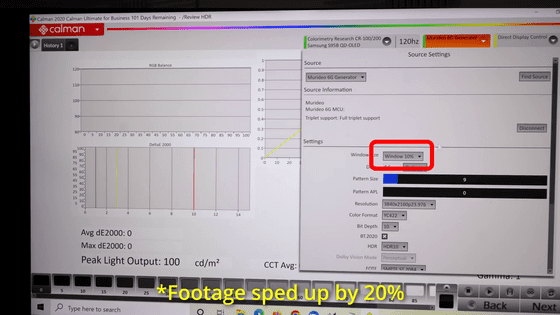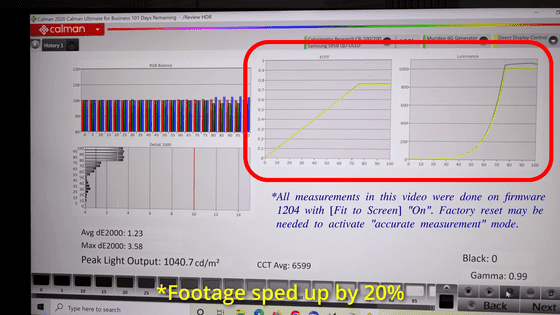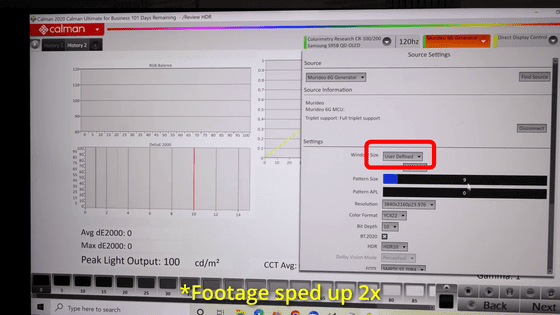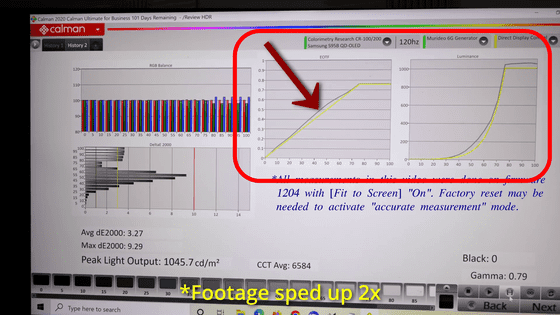It turns out that Samsung has put 'a function to make benchmark measurements illegally high performance' on the TV

Samsung,
Samsung QN95B'Neo QLED' review --FlatpanelsHD
https://www.flatpanelshd.com/review.php?id=1654162781
Samsung Busted For Cheating TV Test Benchmarks | Techdirt
https://www.techdirt.com/2022/06/17/samsung-busted-for-cheating-tv-test-benchmarks/
The first to find this problem was the YouTube channel HDTV Test , which was reviewing Samsung's OLED TV ' Samsung S95B ' released in May 2022. You can see what it is like from around 1 minute 20 seconds after the start of playback of the following movie.
I Love QD-OLED, But EVERYONE Is Wrong about Samsung S95B's Brightness & Colors --YouTube
HDTVTest was first tested with a window size of '10%', which is the most common setting for TV reviewers to benchmark HDR.

As a result, the yellow reference value line and the gray measured value line are almost exactly the same in the

However, when I change the window size ...

The line of the reference value and the line of the measured value are out of alignment.

The same phenomenon was confirmed in the benchmark of RTINGS.com, which rates various devices. Regarding the results of the benchmark conducted on 'Samsung S95B', RTINGS.com said, 'Unfortunately, as of firmware 1211, most scenes are not displayed at the correct brightness level when in' Movie 'mode. The window used for measurement. Results will vary depending on size. '
In addition, it turns out that the measurement results are being manipulated on another Samsung TV. Below are the results of a TV and monitor review site, Flatpanels HD, testing HDR on Samsung's smart TV ' Samsung QN95B ' with window sizes of 10% (left) and 9% (right). As with the 'Samsung S95B', you can see that the EOTF and luminance graphs have different results.
According to FlatpanelsHD, the measurement result should not be affected even if the window size changes. FlatpanelsHD says in this regard, 'changing the measurement window from the standard 10% to 9% only changes the percentage of the test pattern on the screen from 10% to 9%, nothing else. So the result, as HDTVTest pointed out, is that 'Samsung TVs detect the 10% window size commonly used by reviewers and adjust the image output so that the measurements look more accurate than they really are. It's just a systematic effort to deceive the reviewers, that is, intentional cheating. '
In a statement to Flatpanels HD, Samsung said, 'Samsung is committed to continuous innovation to provide consumers with the best image quality. We also want to provide consumers with a more dynamic viewing experience. We will provide software updates to ensure consistent brightness of HDR content with a wider range of window sizes beyond industry standards, 'fixes this issue without admitting that it is intentional fraud.' I announced that.
Related Posts:
in Hardware, Posted by log1l_ks







